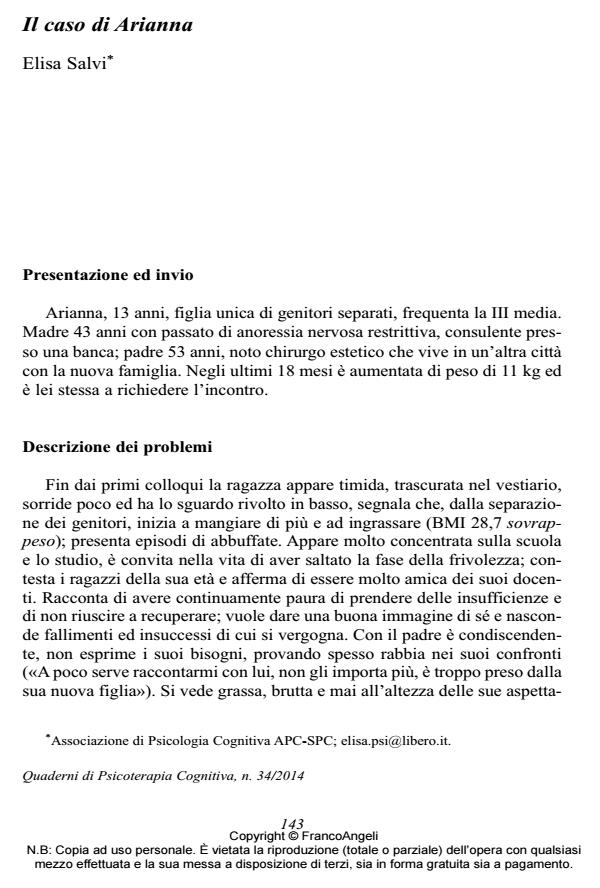Il caso di Arianna
Titolo Rivista QUADERNI DI PSICOTERAPIA COGNITIVA
Autori/Curatori Renzo Salvi
Anno di pubblicazione 2014 Fascicolo 2014/34
Lingua Italiano Numero pagine 12 P. 143-154 Dimensione file 115 KB
DOI 10.3280/QPC2014-034010
Il DOI è il codice a barre della proprietà intellettuale: per saperne di più
clicca qui
Qui sotto puoi vedere in anteprima la prima pagina di questo articolo.
Se questo articolo ti interessa, lo puoi acquistare (e scaricare in formato pdf) seguendo le facili indicazioni per acquistare il download credit. Acquista Download Credits per scaricare questo Articolo in formato PDF

FrancoAngeli è membro della Publishers International Linking Association, Inc (PILA)associazione indipendente e non profit per facilitare (attraverso i servizi tecnologici implementati da CrossRef.org) l’accesso degli studiosi ai contenuti digitali nelle pubblicazioni professionali e scientifiche
Il caso clinico è quello di Arianna, una ragazza di 13 anni che frequenta la III media. Arianna vive sola con la madre dopo la separazione dei genitori. A seguito dell’allontanamento da casa del padre, inizia ad avere problemi con il peso, ingrassa 11 kg e lamenta un calo del tono dell’umore. In questo lavoro descriviamo gli step della psicoterapia in una ragazza che soddisfa i criteri per un disturbo dell’alimentazione non altrimenti specificato in comorbidità con un disturbo depressivo maggiore. L’obiettivo fondamentale del trattamento è stato quello di aiutare la paziente a modificare la relazione con il suo disturbo alimentare, aiutandola, quindi, a sviluppare una sorta di autoconsapevolezza meta cognitiva e, conseguentemente, ridurre la sintomatologia depressiva. Il fine ultimo di questo percorso è stato, dunque, quello di aiuta-re la paziente ad acquisire una modalità di pensiero che la aiutasse ad influenzare in maniera globale il suo modo di definire se stessa e di come sperimenta il mondo.
Parole chiave:Disturbo dell’alimentazione, disturbo depressivo, relazione terapeutica.
Renzo Salvi, Il caso di Arianna in "QUADERNI DI PSICOTERAPIA COGNITIVA" 34/2014, pp 143-154, DOI: 10.3280/QPC2014-034010